Monsoon hits Patna, Bihar; residents fear a repeat of last year’s urban floods
Last year, Patna in Bihar was water-logged for a few days after heavy rainfall. A major reason for this unprecedented situation was a lack of drainage, disappearing ponds, and silted water channels

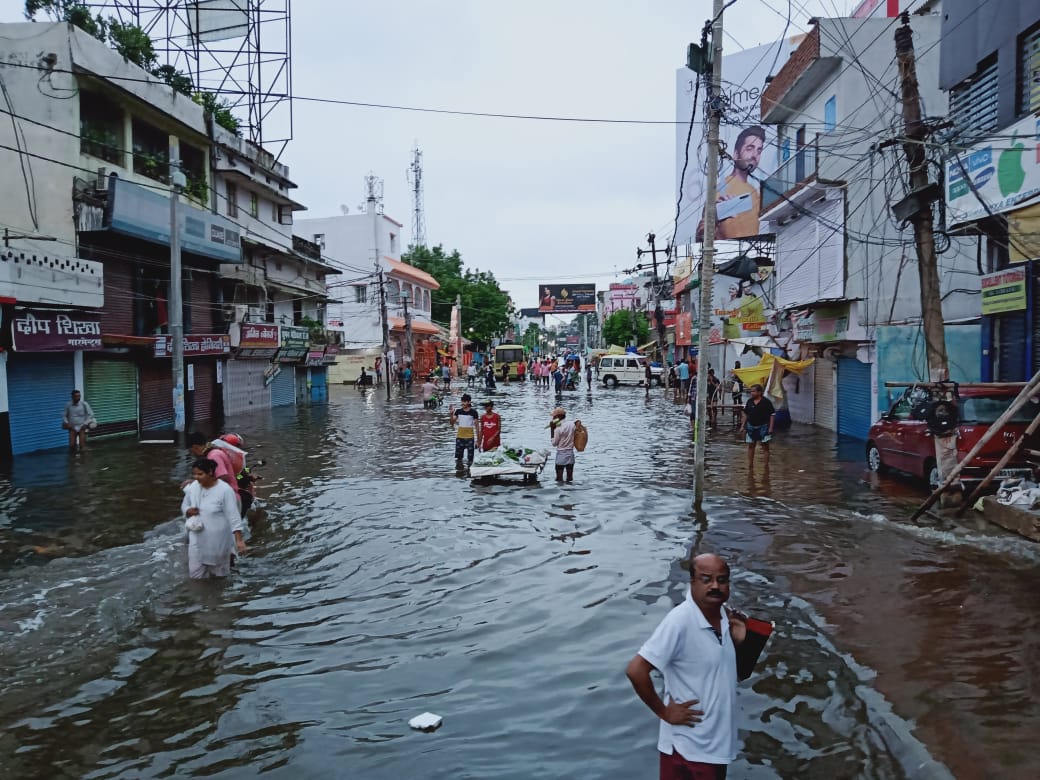
Kankarbagh area after waterlogging in Patna last year. Photo: Puja Kaushik
Bihar would certainly be the first state to face a catastrophe of challenges that will decide the political future of the incumbent Chief Minister Nitish Kumar’s government amid a novel coronavirus disease (COVID-19) pandemic. The chief opposition party Rashtriya Janata Dal has been attacking the incumbent chief minister for the gross mismanagement in handling the return of migrant labourers, or the overall mismanagement of the pandemic.
Amid all these crises, one after another, Bihar now braces up for its annual cycle of floods that are no more limited to the rural pockets of North Bihar, the country’s most flood-prone area, but also the capital city Patna. Latter faced unprecedented urban floods and water-logging last year when incessant rains inundated large parts of the city marooning residents and disaster relief forces evacuating.
Probes were announced and committees set up to look into the Patna floods. But, a year later, is the city better prepared to handle this year’s monsoon rainfall?
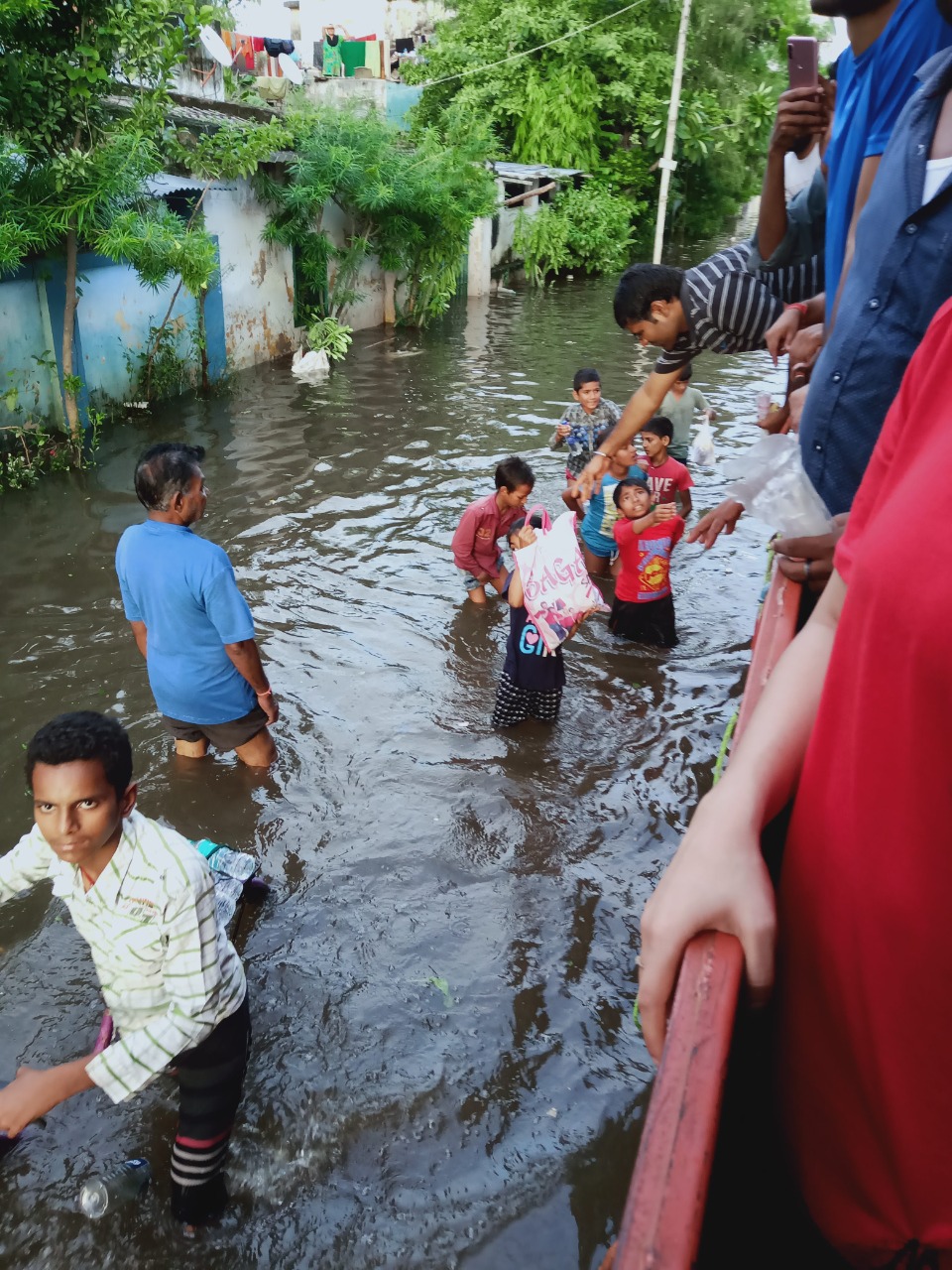
“The government is unprepared to handle heavy rainfall and water-logging. I am sure we are going to face a similar flood situation this year too,” Ramjee Roy, a resident of Gardanibagh in Patna, told Gaon Connection. “Last night, it rained for a few hours, and our locality Gardanibagh was submerged in water. With choked and overflowing drains, we can’t expect anything better,” he added.
Recently, on June 13, the chief minister called for a meeting to review the state government’s flood preparedness. He has ordered district magistrates to ensure setting up safe shelters for flood-affected areas in sync with the COVID-19 guidelines. “He [Nitish Kumar] advised the officials to ensure COVID-19 patients do not get mixed up with flood victims. Also, the flood relief sites have been recognised and preparations are underway. In all these relief camps, proper COVID screening would be conducted and medical supplies will be ensured,” a senior official, who attended the flood preparedness meeting, told Gaon Connection.
The chief minister seems particularly concerned about Patna water-logging and also made visits to the drainage pumping houses and the COVID-19 care centres in the city.
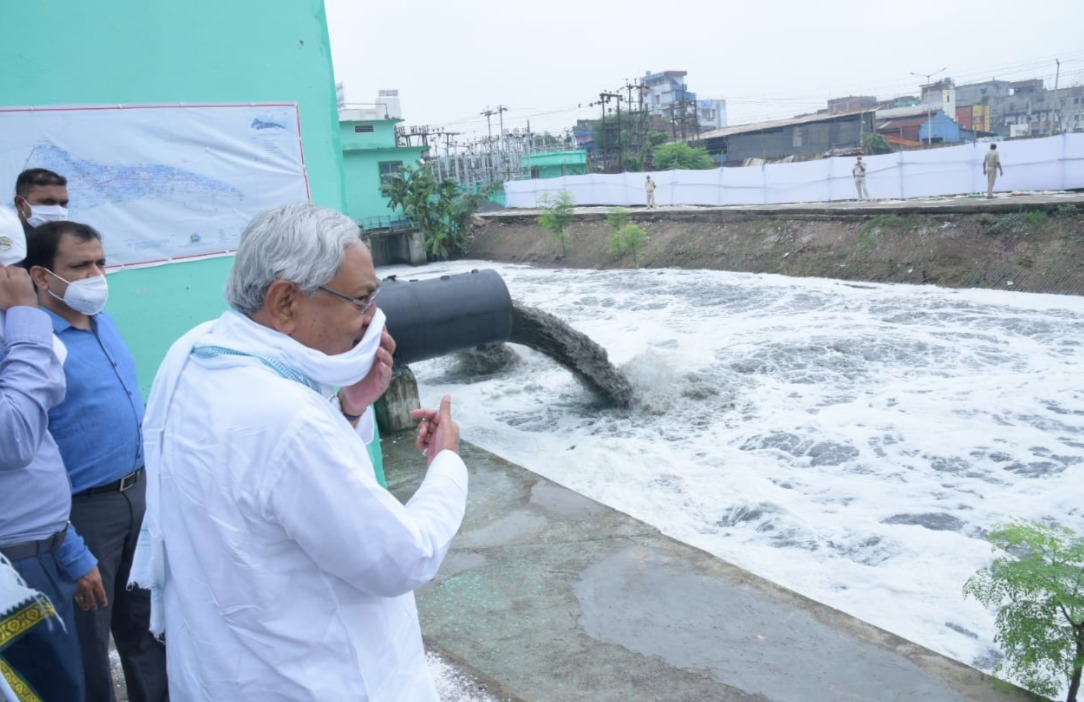
Patna, a city bound by three rivers
Last year, in the last week of September, Patna received very heavy rainfall submerging various parts of the city, with some areas water-logged in four to five feet water. The urban floods did not spare the state ministers, too. Deputy Chief Minister Sushil Modi, dressed in shorts and slippers in his hand, with a few bags on his side, had to be rescued from his home along with his family members.
Residents do not rule the possibility of water-logging this year. But what has added to their woes is dealing with floods and COVID-19 together. As per Vivek Sinha, director, Meteorological Centre, Patna, the city received 35 mm of rain on June 18. Even that much rainfall lead to water-logging in many parts of the city. Over the next few days, as per the weather forecast, Patna is expected to have “rainfall with thunderstorms most likely at most places.”
But heavy rainfall alone is not to be blamed for the urban floods in Patna. There are other important factors, including the larger inefficacies of urban planning that lead to the sinking of the city last year.
Recently, on June 19, a group of independent researchers released an analysis report, “The Patna Water-logging 2019: A Classic Case of Administrative Failure Doubled With Public Negligence”, which documents numerous administrative factors aggravating the urban floods crisis manifold.
Patna is bound by three major rivers – Ganga, Punpun and Son. Floods in North bihar increase the water levels in these rivers too. As city’s natural drains excess run-off into these rivers, and If this coincides with heavy rainfall and it might be a disaster.
However, there are other human factors that have made the matters worse. Until the 1990s, Patna had around 1,000 ponds, of which only 200 are remaining at present. These ponds were a part of the city’s natural water management.
“From Khemnichak and Brahmpur in the south to New Azimabad in the north and Saguna More or Gola road in the west, localities have been built by filling up ponds, wetlands and low-lying areas. These ponds assisted the drainage system and also helped in maintaining the groundwater table of the city,” reads the recently-released analysis report.
“Be it Tara Mandal, the Indira Gandhi Institute of Medical Sciences (IGIMS), Nalanda Medical College and Hospital (NMCH), or the newly-built colonies such as Hanuman Nagar, Rajiv Nagar, etc. They are all built by filling up the ponds and wetlands,” notes the report.
Ghost of waterlogging has returned to the city with recent rainfall. Most of the low lying areas of Patna, namely Buddhmurti, MP Sinha Road, Patliputra, Kankarbagh, Ram Lakhan Road and others were agricultural land before 1980. These regions had a natural outlet of drainage flowing into river Ganga. A few other drains were blocked and in some, like Bakarganj drain, the flow had been reversed, mostly due to waterlogging in the areas of its natural flow. Even in the newly built localities, for example, localities spread from Beur Jail to Zero mile in the new Bypass area, has stressed sewer system. While this is in the South East, the South West is no different either. Kankarbagh region faced waterlogging, as the Bbadshahi canal, where the water flows from the city to river Punpun, is encroached.
As these areas developed in terms of human population, with no planned sewer system, broad natural drains, turned into narrow drains. This aspect can be witnessed in all the well settled areas of Patna.
Authorities sans accountability?
Although Patna ranked 32nd in 100 cities in the country picked up to assess the implementation of the Smart City project, it has a choked drainage network and a punctured sewage system. For instance, last year when the city drowned and the officials scrambled to clear the choked drains, they could not find the map of the city’s drainage network.
Non-functional sump houses, silted drains, and a turbulent relationship between the Patna Municipal Corporation (PMC) and the Bihar Urban Infrastructure Development Corporation Limited (BUIDCO), contributed to the chaos. It is the latter’s responsibility to ensure the repair of all the motors, pumps, transformers. However, when the city was marooned, it was realised that 38 out of the 39 sump houses were defunct due to some reason or the other. Despite early warnings, the city authorities had not de-silted the drains.
The recently-released analysis report also blames Namami Gange, one of the flagship projects of the Central government, for keeping Patna residents stranded for days during last year’s floods. “Sewer pipelines are being laid down in the entire city and this has led to the damage of the previous drainage system by breaking drainage pipes, creating manholes, puddles and ditches, which have further assisted the accumulation of water in the city,” reads the report.
The Namami Gange project comes directly under the Bihar Urban Infrastructure Development Corporation Limited, while the drainage system is controlled by the Patna municipality. The tussle between both these agencies and a lack of coordination made the matters worse, alleges the report.
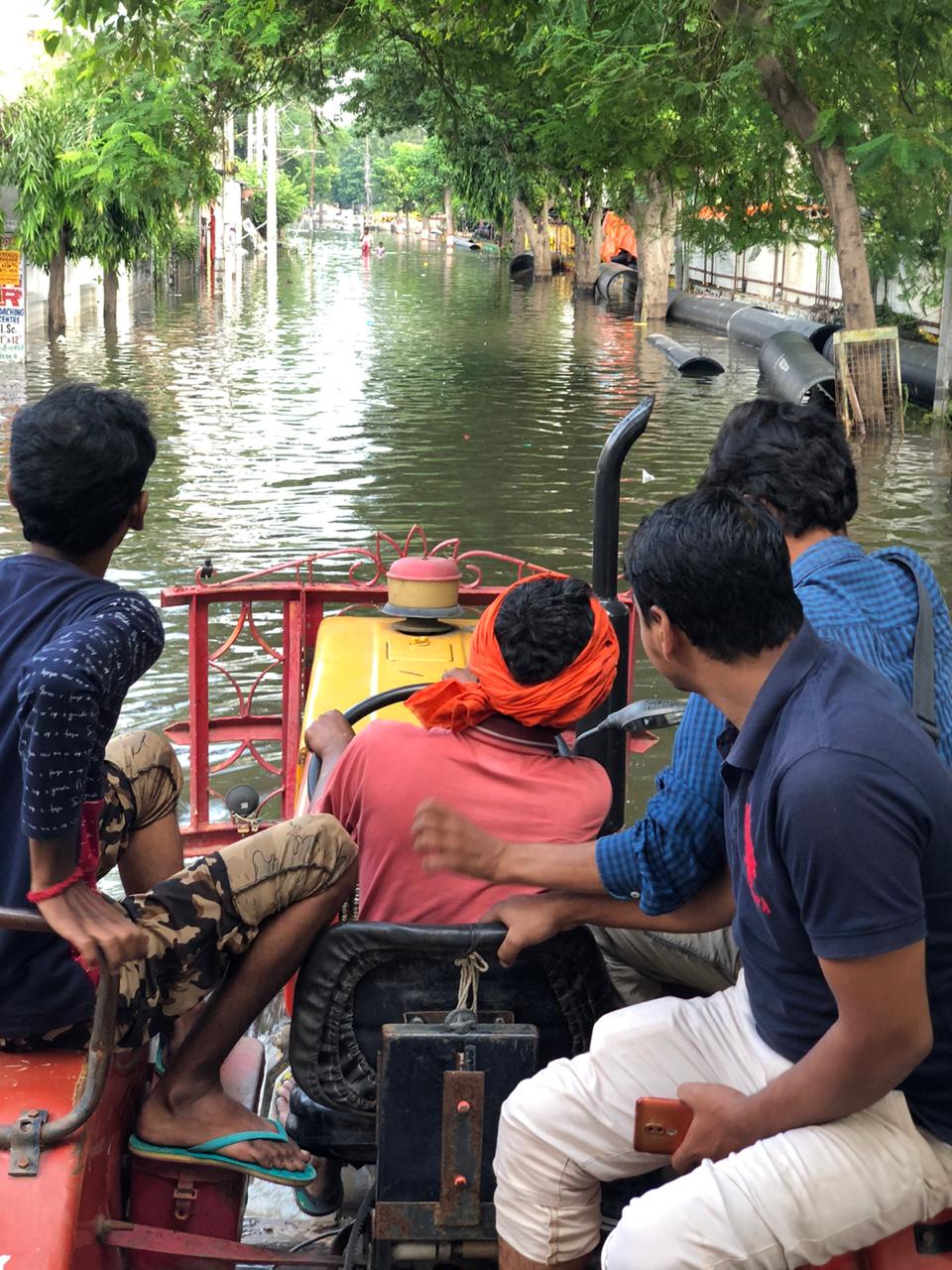
Will it be a repeat of the last year?
Memories of the last year’s floods are still fresh in the minds of the residents. “For us, it is a twin crisis this time. Already coronavirus cases in the state, particularly Patna, are soaring up. The administration could not handle the situation last year when things were normal and early warnings were given. We shudder to think what will happen in the twin crises this monsoon,” said Rashmi Kumari, a banker living in Kankarbagh locality of Patna.
But the state government officials assure the state and the city is well prepared to handle heavy rainfall and rain-induced water-logging. “We are fully prepared as per the Standard Operating Procedures (SOPs). The department has been monitoring the monsoon closely. We are aware that the state might have to deal with twin crises this time, we are prepared accordingly. Proper screening and ensuring social distancing at the relief shelters would be prioritised,” Awdesh Kumar Jha, a senior officer at the Water Resources Department, told Gaon Connection.
But residents are not ready to buy the tall claims of the department. Pushyamitra, a social activist and a senior journalist, who is a member of the recently-released analysis report on Patna water-logging said: “Every year, much before monsoon strikes the state, SOPs [Standard Operating Procedures] are in place. But the actual preparedness reflects on the ground when the chief minister makes air surveillance of the flood-affected regions. By then, the devastation has actually occurred.”
Incidentally, the Patna Municipal Corporation admitted in the Patna High Court that it “squarely failed” in handling the situation last year when the city was marooned for days. Gaon Connection tried reaching out to city Mayor Sita Sahu and Deputy Mayor Meera Devi to check on the city’s preparedness, but received no response.
Floods and a broken public health system
Last year, during the floods, Bihar’s second-largest hospital, Nalanda Medical College and Hospital (NMCH), was inundated with water. Both the Intensive Care Units (ICUs) and other wards of the hospital were waterlogged, forcing evacuation of the patients during heavy rains.
This year, the same hospital is Bihar’s first Covid-19-dedicated hospital. Even a faint possibility of repetition of a similar situation alarms the Bihar chapter of the Indian Medical Association (IMA). “Bihar is currently toppled with a number of crises, a few of which are created of its own,” Ajay Kumar, senior member at the Indian Medical Association, Bihar, told Gaon Connection. “With limited resources and huge uncertainties, our doctors are giving their best. Now if the heavy rains and water-logging happens in the city, the government must have alternate preparations in advance,” he added.
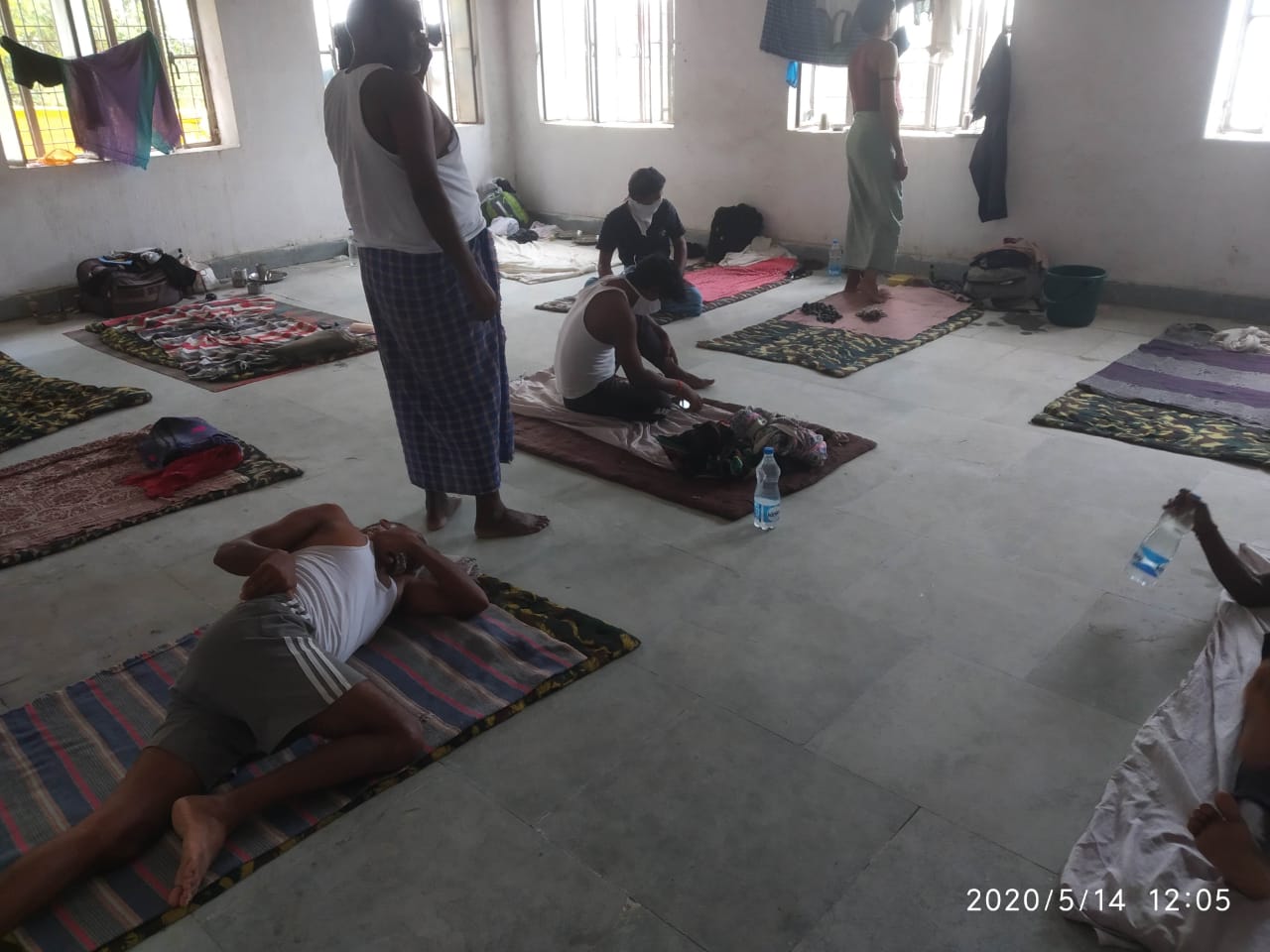
Until June 19, all 38 districts of Bihar have reported COVID-19 cases, of which Patna has the highest tally with 373 confirmed cases. Ironically, when the cases are rising, on June 15, the chief minister announced all the quarantine centres at the block level would be closed, except the ones in the containment zones. This rationale for closing the quarantine centres is not well received by many in the state.
In an attempt to brace with twin crises, Patliputra Sports Complex in Patna has been turned into a 100-bed COVID-19 care centre. Apart from the Nalanda Medical College and Hospital, Anugrah Narayan Medical College and Hospital is another COVID-19-dedicated hospital in the city. If the need arises, 50 per cent beds in private hospitals will also be taken over to fight the ongoing pandemic, said the government.
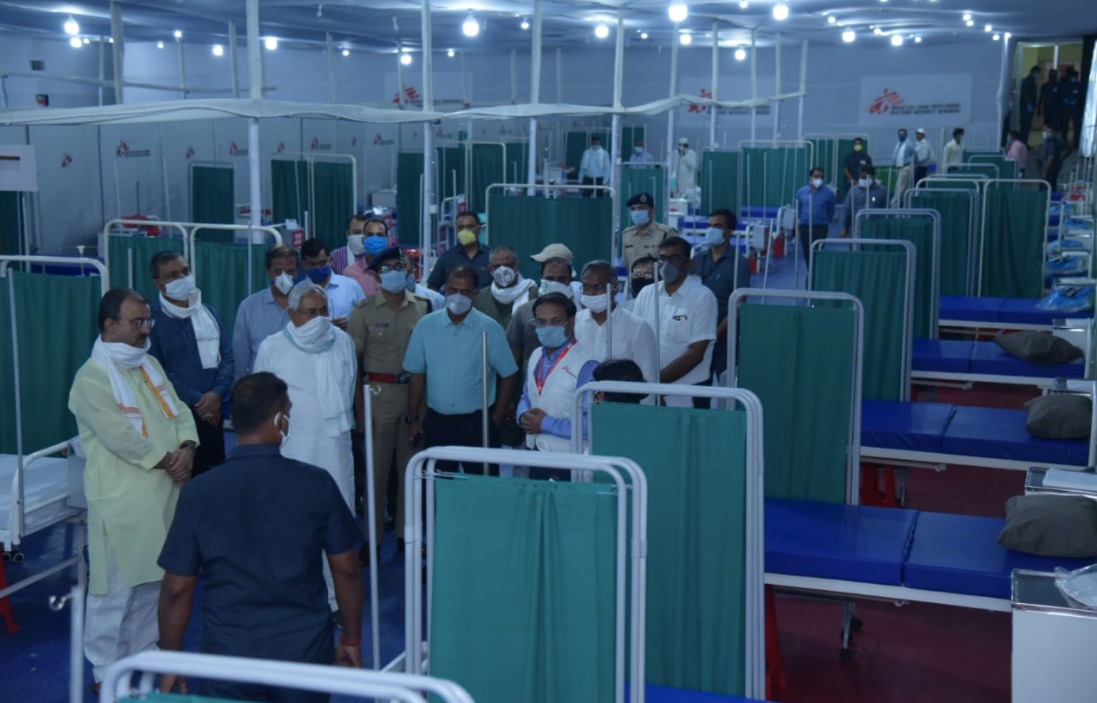
But the Indian Medical Association is worried about the inadequate number of doctors in the state. “For the last couple of years, the association has been battling with the state government to get more than 6,000 vacant positions filled, of which 4,000 positions were for general physicians and the rest for specialists. Last year, when the vacancies were finally out, few of the candidates challenged the procedure in the high court and since then, the matter is lingering in the high court,” Shaligram Vishwakarma, former president of the Indian Medical Association Bihar chapter told Gaon Connection.
Tension simmering on the India-Nepal border
The simmering tension between India and Nepal, because of Nepal constitutionally adopting a new map including the Kalapani, Limpiyadhura and Lipulekh historically claimed by India, could possibly worsen the flood management in Bihar, as a number of Himalayan rivers flow from Nepal into the state, which are tributaries of the Ganga, and sharing of data and information is crucial for flood management.
BK Mishra, a professor with the department of geology at Patna University terms the present situation in the state as “Bhagwan Bharose” [all on the God]. “The situation this year is peculiar and critical at the same time because of the multiple issues. First, the state government is struggling with a pandemic with a delicate public health system. Second, the city’s drainage and sewer system are still the same. The Patna municipality started cleaning the drains just a few weeks before the first monsoon rain,” he told Gaon Connection.
“Add to this the possibility of floods in North Bihar and the stressed relations with Nepal. God forbid, if all this happens together, the situation could be much worse and beyond our imagination,” he added.

